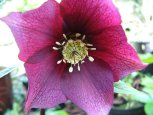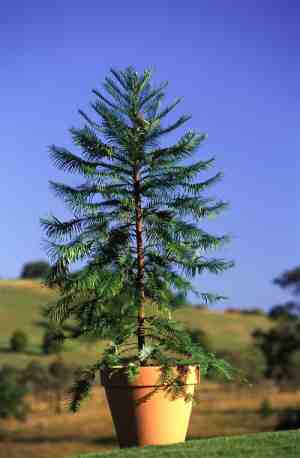
JOHN SPOONER
Landscape and Architectural Design


IN MY GARDEN
Currently in flower in my garden.
(Cyclamen
and Helleborus)
INTRODUCTION
ARCHITECTURAL
PROJECTS
GARDEN DESIGN PROJECTS
CONTACT
BLOG
ARCHIVE
What shall I do with my time now that I am retired ?
(I don't
think that will be a problem)
EARLY CHRISTMAS PRESENT
18
DECEMBER 2008
Today a parcel arrived. Apparently
order by Linda. I signed for it (no idea what
it was).
Linda said "it is a Christmas Present for you -
but it's been delivered a bit sooner than I expected".
"It
cannot stay in the box - it needs to be opened NOW !!!" -
"So you better open it NOW !"
So I opened it......... WOW !!!!!!!
A WOLLEMI PINE !!!!!
These are rare pines only recently discovered and previously thought to be extinct.
The discovery, on or about 10 September 1994, by David Noble, a field officer of the Wollemi National Park in Wentworth Falls, in the Blue Mountains, only occurred because of his adventurous bushwalking and rock climbing abilities. Noble had good botanical knowledge, and quickly recognised the trees as unusual and worthy of further investigation. Returning with specimens, and expecting someone to be able to identify the plants, Noble soon found that they were new to science. Further study would be needed to establish its relationship to other conifers. The initial suspicion was that it had certain characteristics of the 200-million-year-old family Araucariaceae, but was not similar to any living species in the family. Comparison with living and fossilised Araucariaceae proved that it was a member of that family, and it has been placed into a new genus with Agathis and Araucaria. Fossils resembling Wollemia and possibly related to it are widespread in Australia New Zealand and Antarctica, but Wollemia nobilis is the sole living member of its genus. The last known fossils of the genus date from approximately 2 million years ago. It is thus described as a living fossil, or alternatively, a Lazarus taxon.
Fewer than a hundred trees are known to be growing wild, in three localities not far apart. It is very difficult to count them as most trees are multistemmed and may have a connected root system. Genetic testing has revealed that all the specimens are genetically indistinguishable, suggesting that the species has been through a genetic bottleneck in which its population became so low (possibly just one or two individuals) that all genetic variability was lost.
In November 2005, wild-growing trees were found to be infected with Phytophthora cinnamomi. New South Wales park rangers believe the virulent water mould was introduced by unauthorised visitors to the site, whose location is still undisclosed to the public.
A propagation programme has culminated with the Wollemi Pine available to botanical gardens first, then commercially available in Australia from 1 April 2006. It was released commercially in Western Europe in June 2006 and in the United States in December 2006. It was to be commercially released in other countries during 2006. It may prove to be a valuable tree for ornament, either planted in open ground or for tubs and planters. It is also proving to be more adaptable and cold-hardy than its restricted subtropical distribution would suggest, tolerating temperatures between -5°C and 45°C (23° and 113°F), with reports that it can survive down to -12°C (10°F). It also handles both full sun and full shade. Like many other Australian trees, Wollemia is susceptible to the pathogenic water mould Phytophthora cinnamomi, so this may limit its potential as a timber tree

COMMENTS
To
send me comments on this please send email
click here ![]()